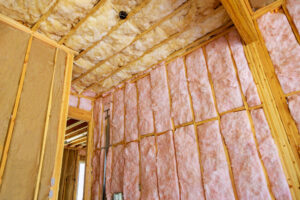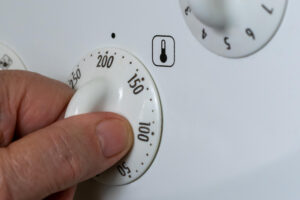Selling your home? Don’t forget your home energy improvements!
Last updated on March 16th, 2024 at 02:08 pm

The housing market is literally flooded with a lot of home right now. Big ones, small ones, all within your price range as a potential buyer.
So how do you decide which one to buy, as a buyer? And as a seller, how do you make your home more attractive to potential buyers so they will select yours as their “next home” amongst a whole host of other options?
Yes, there is the traditional methods of “leaving all the lights on” and cleaning up the place, remove clutter, etc. But from an energy perspective, how do you make your home more attractive?
One of the helpful bonus guides included in the professional version of the Home Energy Audit Kit is the Homebuyer Energy Checklist, which outlines several important areas of a home to look at in terms of energy usage and energy loss.
As a seller, your job is to make sure all the items on this checklist are available for the potential buyer to see. In other words, use the checklist too!
One of the big and easy things you can do is to highlight the efficiency of your appliances, or the appliances that typically stay in the house. The big ones are furnace, hot water heater, and air conditioning units. All have an energy rating sticker on them (at least in North America) that shows how much energy the unit uses, and compares it to the most efficient and least efficient model tested in a lab.
Don’t worry if the unit you have isn’t a high efficiency (HE) unit, or if it isn’t on the high end of the scale. While it is important to consider, the thing that most people don’t understand about these stickers is it all comes down to usage. The new owners of your home won’t use the appliance the same way you do. So their costs will be different.
Also, make it a point to answer energy information, when asked. The most common question is “What is the average electric bill in January? July?”. Here’s a trick. When people ask for an average, tell them the budget payment, if known…and make sure you mention that it is a budget payment. A budget payment is the weighted average of energy costs spread out over a period of usually 6-10 months. Most people understand this. It has the added bonus of evening out the troughs, so to speak, so you don’t have to divulge that your electric payment 0ne month was $300 – because spread out and adding in the down months, you only pay $126. And which sounds better to a buyer with a limited budget? A $300 electric bill or a constant, budget friendly $126?
Don’t volunteer this information unless asked, unless you have older appliances that may be a concern to buyers. For example, most people are very leery of old furnaces and air conditioners, but what next to no one realizes is insulation is more important than a new HE (High Efficiency) furnace in most cases. Still, buyers may not be on board with your house because the furnace is old. You may be able to ease their minds a little by telling them your budget heat payment – and highlight that it is average.
There are of course, many many many more areas for opportunity to help sell your home for more and actually earn a profit on your house. I’d recommend checking out the Homebuyer Energy Checklist for more tips and of course, follow them!



Would this apply to condos as well?
Obviously make sure the lights used are CFL, especially if you are going to keep lights on. Nice post.
One of the best things I can think of is to actually turn up the heat in your home (during the winter) so your house feels warmer and inviting. No one likes coming home to a cold house. This doesnt save you money, but it can help close the sale faster. I guess it all depends what you want…